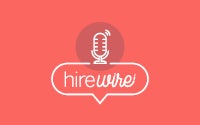How to write the perfect job advertisement

Start your recruitment process in the right way by following these tips to creating the perfect job ad…
An effective job ad is the first step in finding the right talent for your company. Not only will it help you sell the role to prospective candidates it will allow you to make informed hiring decisions that meet the needs of your business.
But how do you craft a great job ad? To help, two of our in-house experts share their top tips.
- Use clear and search friendly job titles
“The first thing candidates will read is the job title so make sure they can immediately gauge what the job entails from that alone,” says Ben Tinker, Talent Marketing & Insights Director at Resource Solutions. As he explains, job titles should avoid using any language or acronyms that are specific to the internal structure of the company as it may put off external candidates.”
Ben continues: “Job titles should be as concise and specific as possible to ensure they’re targeted to the right audiences on job boards and can be found easily via search engines.”
- Tell your company story
The job ad is often the encounter a candidate has with your employer brand – use the ad to summarise your employer value proposition (EVP).
Ben adds, “use your job ads to summarise your EVP and emphasise the elements of your company’s employee offering which are most relevant to your location or the type of talent you’re looking to attract.” - Be bold and on brand
The job ad could also be the first time a candidate hears of your company at all.
“Get the candidate excited about the company brand,” advises Serena Pook, EMEA Head of Talent Acquisition at Resource Solutions. “Consider looping in your communications team to leverage marketing-approved slogans, and company highlights such as award wins and any other newsworthy developments that can inform candidates about your company.”
“Keep the language simple and straightforward avoiding any company-specific jargon,” she adds. - Be specific about role requirements
“As well as summarising the role, effective job ads should include a list of the critical skills required for the role,” says Serena. Any specific expertise needed to carry out the day-to-day responsibilities, such as programming language or knowledge of a particular software, should be included to ensure candidates are able to hit the ground running from the moment they start.
“Add these requirements as a simple, succinct list of bullet points that’s easy for candidates to read whether they’re using a desktop or mobile device to view the listing,” Ben adds. - Go easy on your ‘nice-to-haves’
“Alongside the minimum skills and knowledge required for the role, you may wish to include a few desired qualities you’d like to see in the ideal candidate, including technical as well as soft skills,” continues Ben. However, he warns against including more than five ‘nice-to-have’ qualities in a job ad as this could end up disincentivising candidates from applying in the first place.
As he notes, “including too many requirements, even if they are only desired qualities, could make candidates feel disqualified from the role, increasing the risk of losing out on the best available talent.”
- Be mindful of formatting and layout
“To attract the best talent, job ads need to capture the imagination of the reader within seconds, while laying out all the necessary details in a succinct, visually attractive manner,” notes Serena. But, as she warns, excessively long job ads with chunky paragraphs could result in losing the candidate’s interest so it’s essential to make use of bullet points and concise paragraphs to keep candidates reading.
- Get your hiring managers to take ownership
“To write an effective job ad, it’s essential one person has a clear sense of ownership over the process,” warns Ben. He suggests that even though your HR or your talent acquisition partner will ultimately need to play a big part in crafting the job ad – even if it’s simply providing a template – it should be the line manager of the new hire who provides significant input.
Serena adds, “the hiring manager is generally the best person to ensure a job ad is sufficiently descriptive in terms of core competences and other requirements and selling features of the role.”











